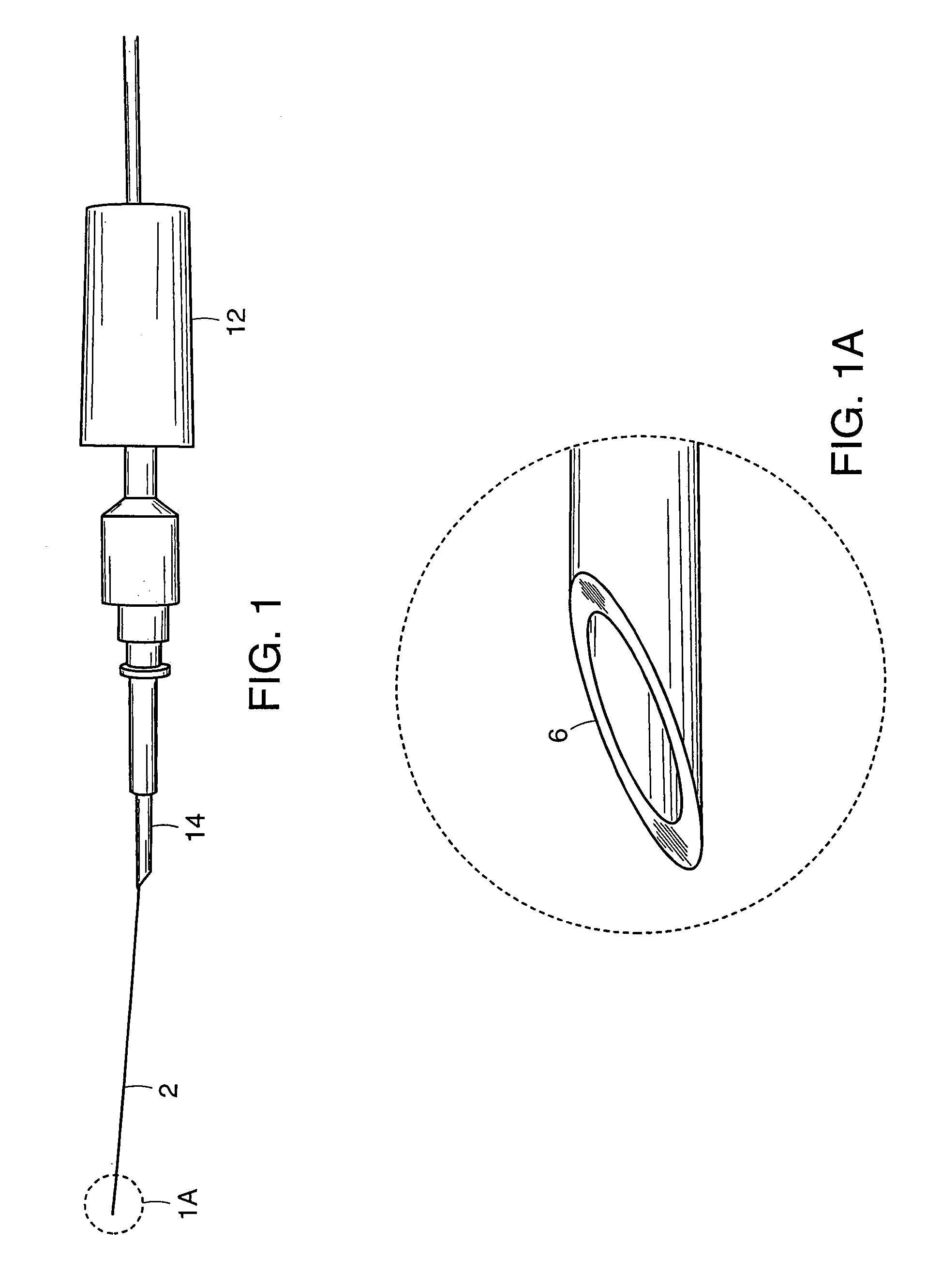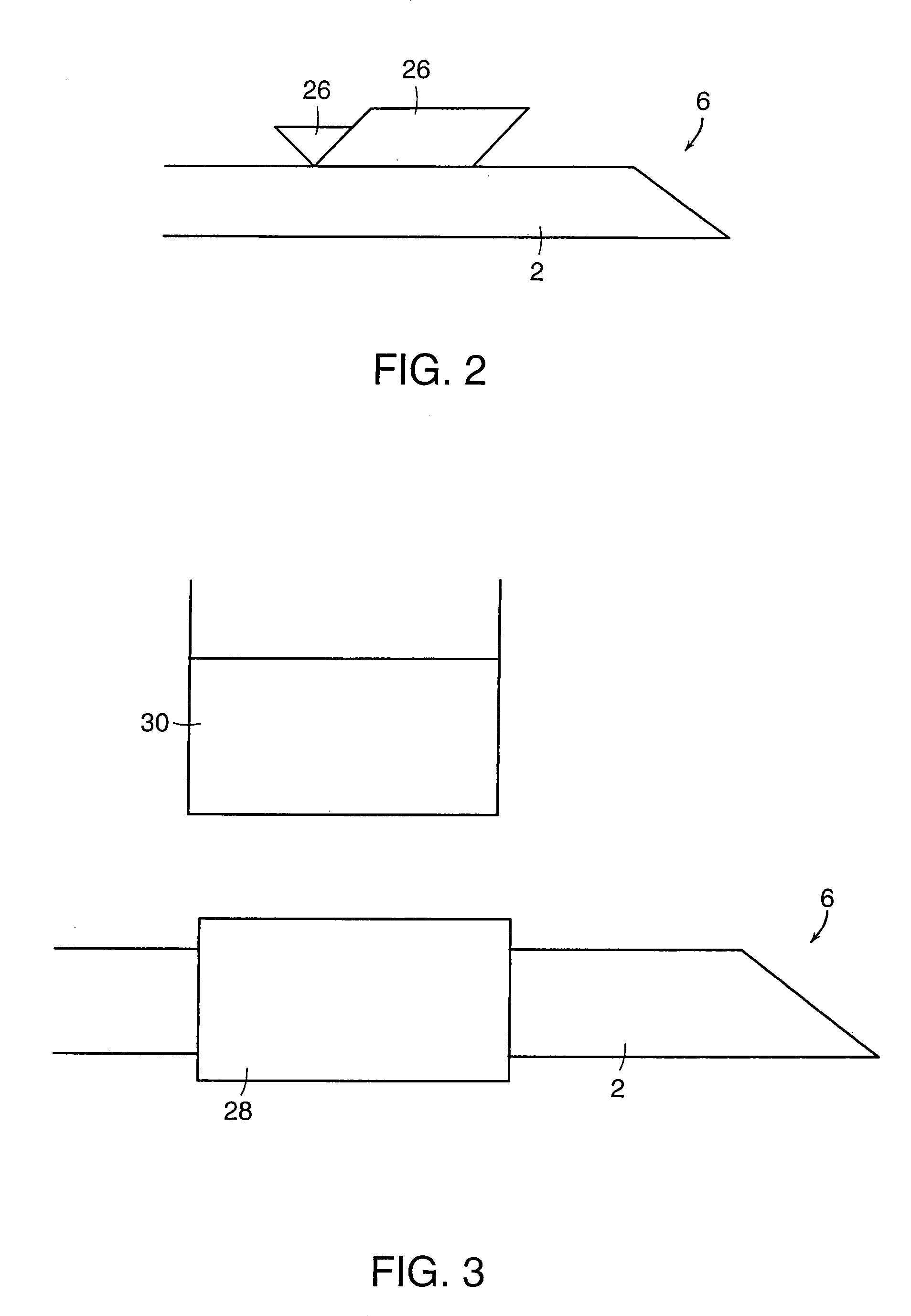Device and method for manual retinal vein catheterization
- Summary
- Abstract
- Description
- Claims
- Application Information
AI Technical Summary
Benefits of technology
Problems solved by technology
Method used
Image
Examples
example 1
Enucleated Porcine Eves Testing—Testing The Polyimide Tubing
[0064]In order to test the distal end 6 of cannula 2, enucleated porcine eyes were used. Twenty-two catheterization procedures were performed in twelve cadaveric porcine eyes. During these experiments, the anterior segment and the vitreous gel were removed. Four cuts were made in the sclera of the remaining posterior half of the globe and the sclera was pinned down to flatten the retina. The cannula was grasped at approximately 0.5 mm from the distal end 6 to be inserted into the vein. In order to make the distal end 6 of the cannula 2 sharp enough to penetrate the vein, the distal end 6 was cut using microscissors so that the tip would approximate a 30° ramp-like configuration. Under microscopic guidance, the distal end 6 of the cannula 2 punctured the vein wall and was advanced slightly within the lumen of the vein. The cannula was then released and the infusion pump activated to ascertain the intravascular status of the ...
example 2
In-Vivo Dog Eyes Testing—Developing the Microcatheter System & Surgical Technique
[0067]In order to develop the surgical technique and delivery system to insert the microcatheter system inside the eye, seven eyes of seven dogs were operated on. The dog was selected as an animal model because the caliber of its retinal blood vessels and because the manner in which the vessels emanate from the optic disc are very similar to humans. All animal procedures were performed in accordance with both Johns Hopkins University Animal Care and Use Committee and the ARVO Statement for the Use of Animals in Ophthalmic and Vision Research.
[0068]The dogs were anesthetized initially with Telasol (Tiletamine HCl and Zolazepam HCl, Fort Dodge Animal Health; 4–7.5 mg / kg IM) and then they received a gas mixture with oxygen and halothane (98–99% oxygen and 1–2% halothane at a rate of 1.5–2 l / min). Throughout the surgery the dog's EEG, respiration rate and body temperature were monitored. The operated eye wa...
PUM
 Login to View More
Login to View More Abstract
Description
Claims
Application Information
 Login to View More
Login to View More - R&D
- Intellectual Property
- Life Sciences
- Materials
- Tech Scout
- Unparalleled Data Quality
- Higher Quality Content
- 60% Fewer Hallucinations
Browse by: Latest US Patents, China's latest patents, Technical Efficacy Thesaurus, Application Domain, Technology Topic, Popular Technical Reports.
© 2025 PatSnap. All rights reserved.Legal|Privacy policy|Modern Slavery Act Transparency Statement|Sitemap|About US| Contact US: help@patsnap.com



